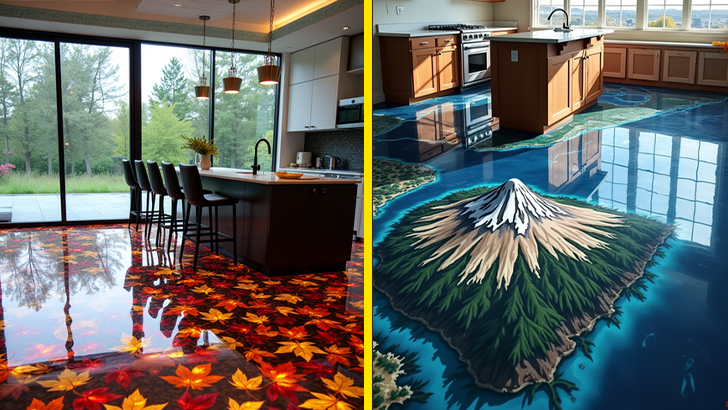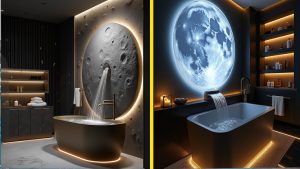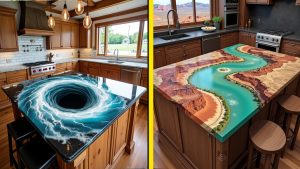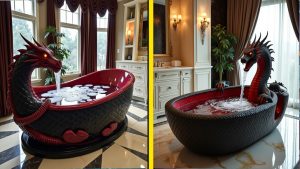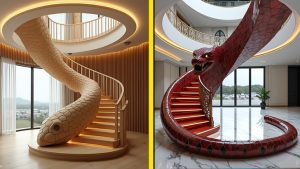Imagine walking into a room where the floor beneath you comes alive, shifting from a serene beach scene to a bustling cityscape with just a tap. Active scene floors are revolutionizing interior design by merging advanced technology with artistic expression, creating immersive environments that captivate the senses.
What Are Active Scene Floors?
Active scene floors are innovative flooring systems that incorporate ultra-thin OLED screens beneath a protective, high-gloss epoxy layer. These screens display dynamic, animated visuals that can be customized and controlled to suit various moods and themes. The result is a floor that not only serves a functional purpose but also enhances the aesthetic appeal of a space.

Key Features of Active Scene Floors
Dynamic Visuals: A vast library of animated scenes, from tranquil natural landscapes to vibrant urban settings, allows users to transform their environment instantly.
Interactive Elements: Some systems respond to movement, creating interactive effects that engage users and add a playful dimension to the space.
User-Friendly Controls: Floors can be managed via wall-mounted panels or smartphone apps, offering convenience and flexibility in changing scenes or adjusting settings.
Durability: The epoxy coating provides a scratch-resistant and easy-to-clean surface, ensuring longevity and minimal maintenance.
Benefits of Installing Active Scene Floors
Enhanced Ambiance: Tailor the atmosphere of a room to match specific occasions, times of day, or personal preferences, creating a unique and personalized experience.
Versatility: Suitable for various environments, including homes, offices, retail spaces, and entertainment venues, making them a versatile design solution.
Increased Property Value: The innovative and luxurious appeal of active scene floors can add significant value to a property, attracting potential buyers or clients.
Applications in Various Settings
Residential Spaces: Homeowners can enjoy a dynamic living environment, with floors that adapt to different moods or themes, enhancing daily life.
Commercial Spaces: Businesses can create memorable customer experiences, using floors to display branding elements or seasonal themes.
Educational Institutions: Interactive floors can serve as educational tools, displaying informative visuals that engage students in a dynamic learning process.
Installation Process
Installing active scene floors involves several key steps:
Assessment and Planning: Evaluate the space to determine the appropriate size and type of flooring system, considering factors like foot traffic and lighting conditions.
Subfloor Preparation: Ensure the existing floor is level and clean to provide a stable foundation for the installation.
Installation of OLED Panels: Carefully place the ultra-thin OLED screens, aligning them to create a seamless display.
Epoxy Coating Application: Apply a high-gloss, protective epoxy layer over the screens to safeguard against damage and enhance visual depth.
System Integration: Connect the flooring system to control interfaces, such as wall panels or smartphone apps, and test for functionality.
Maintenance and Durability

Active scene floors are designed for longevity and ease of maintenance:
Cleaning: Regular cleaning with a soft cloth and mild detergent keeps the surface looking pristine. Avoid abrasive cleaners that could damage the epoxy layer.
Scratch Resistance: The durable epoxy coating protects against everyday wear and tear, maintaining the floor’s aesthetic appeal over time.
Technical Support: Manufacturers often provide support services to address any technical issues, ensuring the system remains operational and up-to-date.
Customization Options
Users can personalize their active scene floors to reflect individual tastes or brand identities:
Scene Selection: Choose from a wide array of pre-designed animations or commission custom visuals tailored to specific themes or purposes.
Interactive Features: Incorporate motion-responsive elements that react to footsteps, adding an engaging and interactive dimension to the space.
Scheduling: Set automatic scene changes based on time of day or special events, ensuring the environment adapts seamlessly to different contexts.
Technological Integration

Active scene floors can be integrated with smart home or building management systems:
Voice Control: Utilize voice-activated assistants to change scenes or adjust settings without manual input.
Synchronization: Coordinate floor visuals with lighting, sound systems, or other multimedia elements to create cohesive and immersive experiences.
Remote Access: Manage and monitor the flooring system remotely through dedicated apps, allowing for real-time adjustments and updates.
Energy Efficiency Considerations
While active scene floors incorporate advanced technology, energy consumption is a key consideration:
OLED Efficiency: Organic Light Emitting Diodes (OLEDs) are known for their energy-efficient properties, consuming less power compared to traditional display technologies.
Power Management: Systems can be programmed to enter low-power modes during inactivity or adjust brightness levels to conserve energy.
Sustainable Practices: Opting for energy-efficient components and mindful usage contributes to a more sustainable and environmentally friendly installation.
Cost Factors

Several factors influence the cost of installing active scene floors:
Material Quality: High-end OLED panels and premium epoxy coatings may increase initial expenses but offer superior visual quality and durability.
